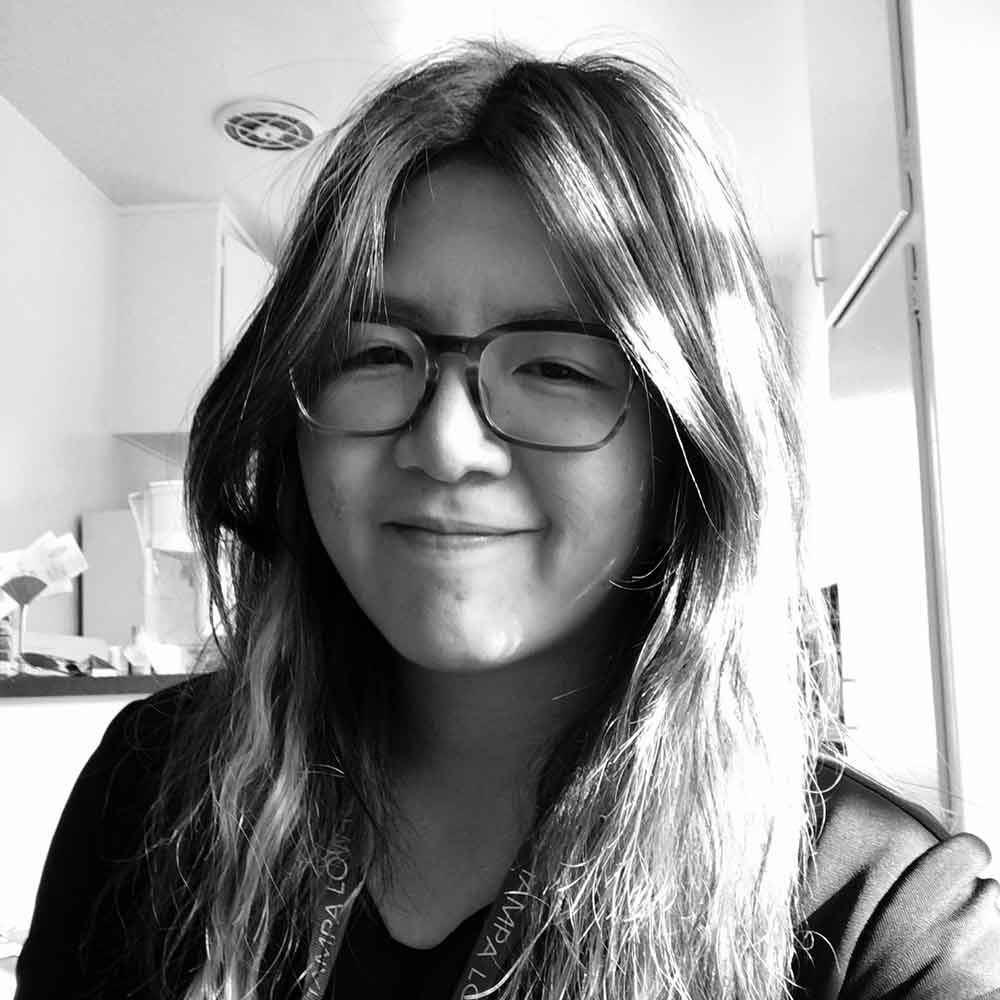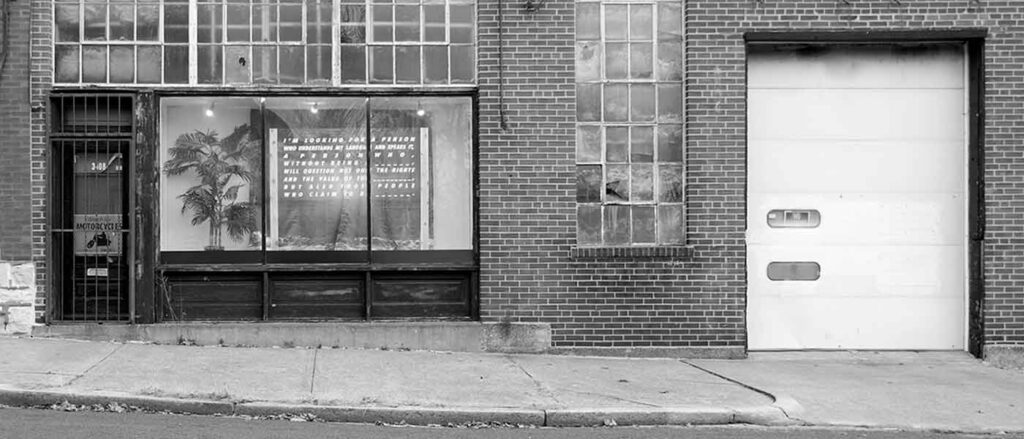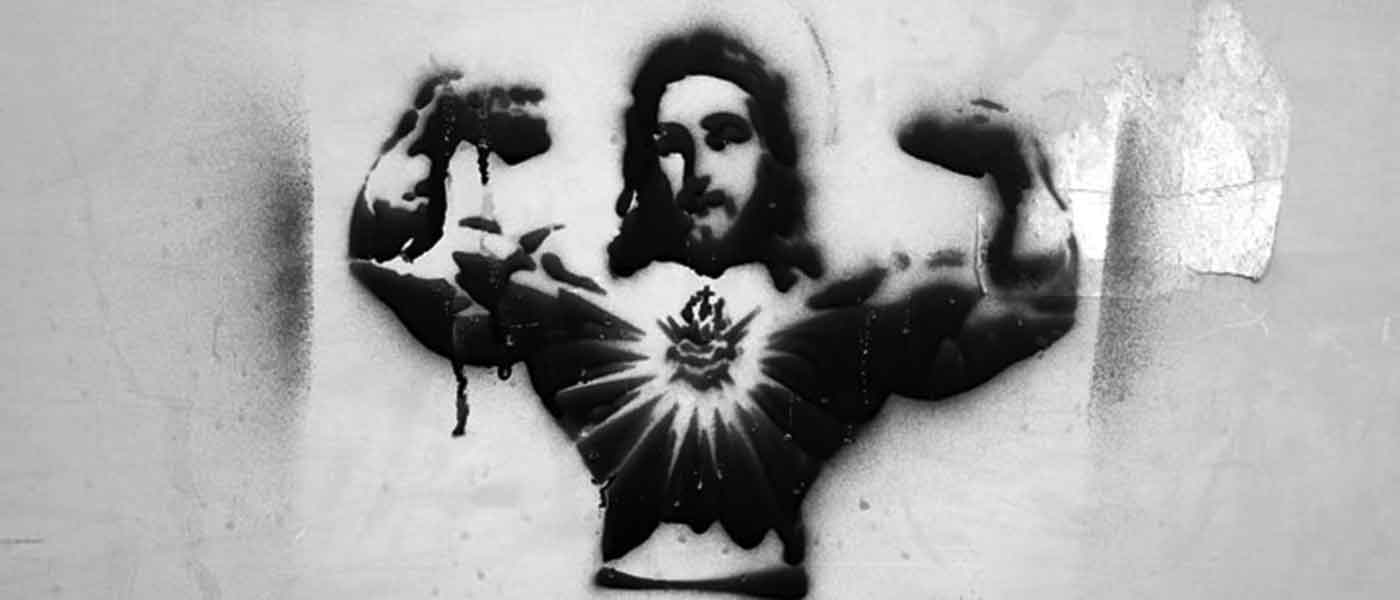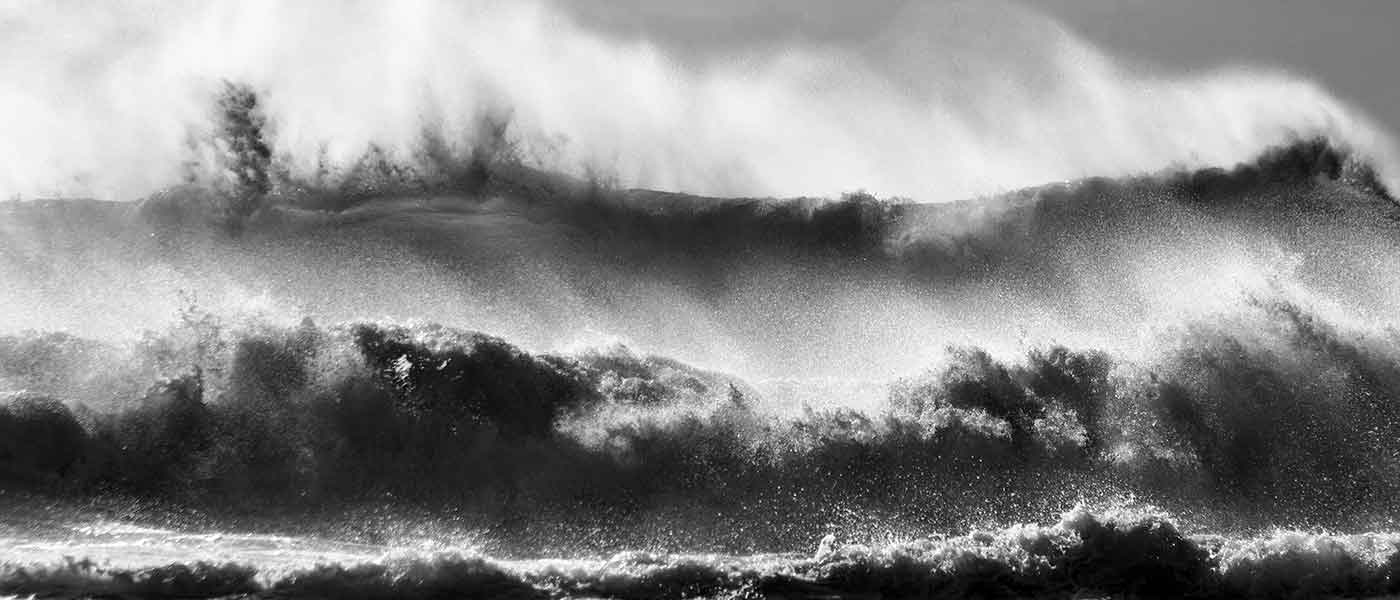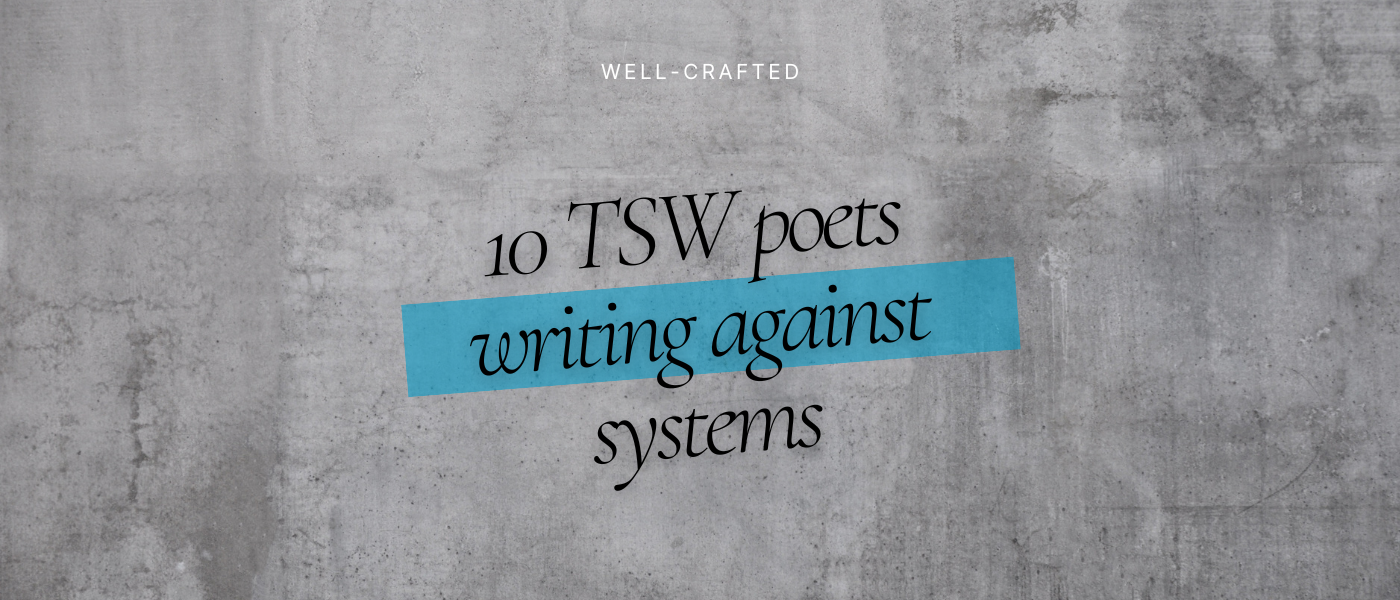Soft Architecture, 2016
Soft Architecture (2016) was initially a site-specific installation for a storefront window at Westminster Press in St. Louis, MO, from December 2015 to January 2016 (below), but it was recreated as a temporary outdoor installation in Petersburg, IL, in February 2016 (above). This public display addresses the identity of minorities, particularly in racial and gender politics, nationality, and geographic marginalization. The freestanding signage greets viewers in the imperative, with fill-in-the-blank text on plexiglass, a form of test that is often found in the assessment of grammar and vocabulary, requiring participants to produce language in order to pass.
The title was inspired by Lisa Robertson’s essay, “Occasional Work and Seven Walks from the Office for Soft Architecture” (2011), which probes various fabrics, cities, rooms, people, histories, and the way space and time function as “soft architecture.” The piece aims to visualize the yearning of belonging, and to vocalize a certain mutism that is so prolonged that it ends with something akin to disquiet.
Excerpt:
“I am looking for a person
who understands my language and speaks it,
a person who,
without being a _ _ _ _ _ _ ,
will question not only the rights
and the value of the _ _ _ _ _ _ _ _ _ ,
but also those people
who claim to be _ _ _ _ _ _ .”
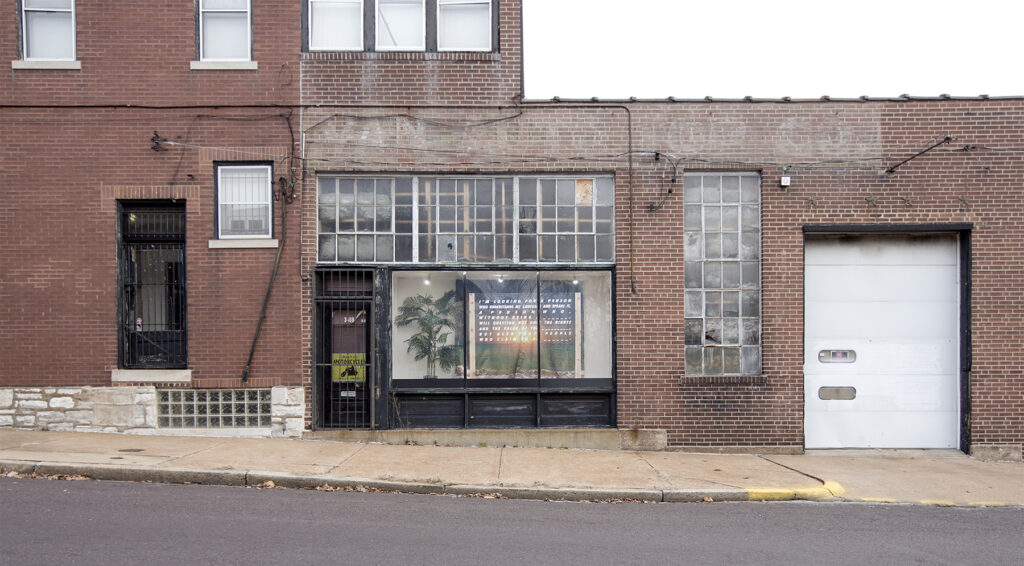
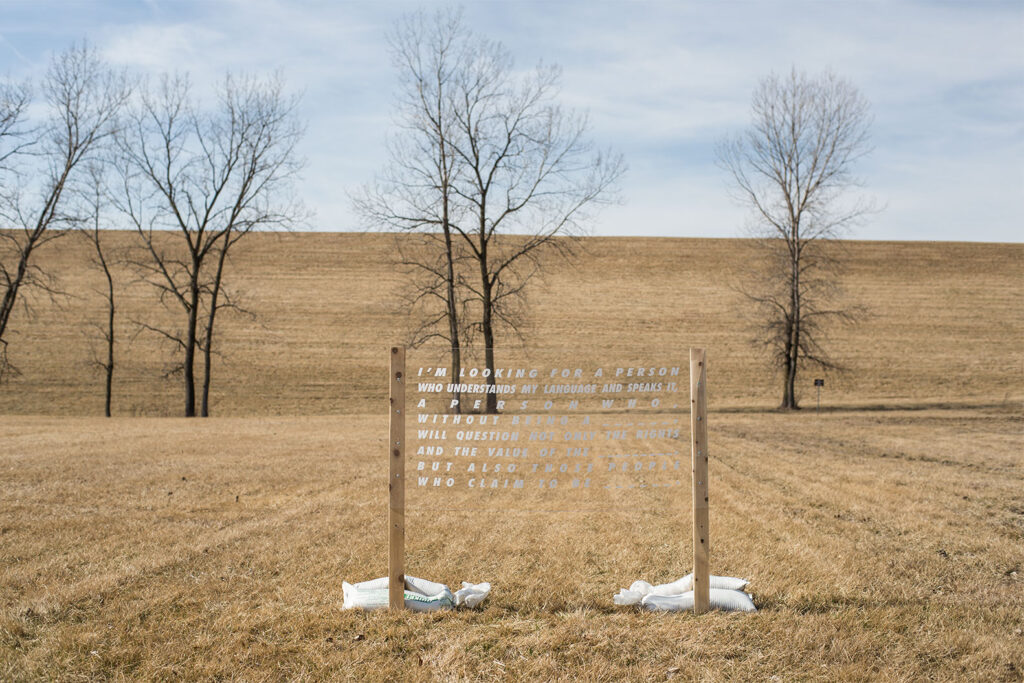
Diary, 15 May 1905, 2013
Digital audio loop, 07:43
Performed by Dayna Kriz
Sound recording and editing by Cole Lu
In Memory and Consciousness (1985), Endel Tulving’s theory of memory systems is divided into three types: procedural, semantic and episodic. Procedural memory is connected with retention and the utilization of perceptual, cognitive, and motor skills. Semantic memory (also known as generic or categorical memory) has to do with symbolically representable knowledge that organisms possess about the world, and episodic memory mediates the remembering of personally experienced events.1
Episodic memory is the most flexible part of our memory. It implies a mental reconstruction of some earlier events in which we extracted and built upon our knowledge based on certain particularities, such as the principle characters involved in actions, setting, and emotional reactions.2 The flexibility of memory progression from procedural memory to semantic memory is attained as episodic memory.
The audio installation Diary, 15 May 1905 (2013) is an attempt to trigger the emotional reaction of episodic memory that has been translated from a written text into audio compositions. It is a composite of eight tracks of orchestrated voice-overs from chapter “15 May 1905” of Einstein’s Dreams (2004) by Alan Lightman. In this work of fiction, readers are asked to imagine a world in which time does not exist as an invisible fourth dimension, but rather as a visual element through which life is traveled and measured. Each chapter is a different dream from Einstein, and in each dream, time behaves differently and is understood in various ways.
In the dream “15 May 1905,” the world exists without time, only images. The composition of this dream is formed by phrases that describe various images that construct the world. The audio narrative therefore creates this world through frozen images that are spoken. These spoken words float and fill the space and trigger a constructed nostalgia through audio perception, opening up a vision of a world that possibly once existed, building an imaginary world with episodic memories.
- Endel, Tulving, “Memory and Consciousness”, Candian Psychology (1985).
- Suddendorf, Thomas and Corballis, Michael C. “The evolution of foresight: What is mental time travel, and is it unique to humans?”, Behavioral and Brain Science (2007), 30: 299-351, 301.
